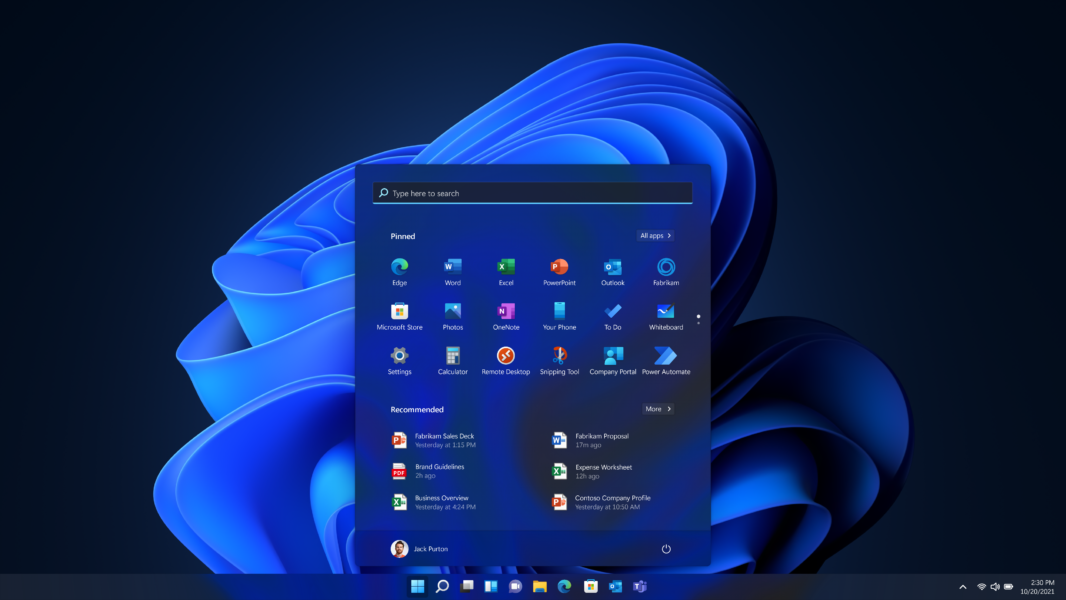Why Is Microsoft Making Such a Big Change?
When Microsoft introduced Windows 10, they hinted it would be the last version—just receiving continuous updates. So, why the shift to Windows 11?
The answer is twofold: cybersecurity and AI advancements. Cyber threats are growing more sophisticated, and businesses need stronger defenses. Windows 11 is designed with built-in enhanced security features, AI-powered tools, and a modernized user experience to keep businesses secure and productive.
Windows 11 Upgrade Deadline: When Does It Take Effect?
The deadline to switch to Windows 11 is October 14, 2025. After this date, Windows 10 will no longer receive security updates or technical support. If your business continues using Windows 10 past this date, you could face:
- Increased cybersecurity risks from unpatched vulnerabilities.
- Lack of Microsoft support, making troubleshooting harder.
- Compatibility issues with future software and applications.
What’s New in Windows 11?
Microsoft has completely overhauled Windows to focus on security, usability, and performance. Here’s what you can expect:
- Stronger Security – Windows 11 requires Secure Boot and TPM 2.0, adding extra layers of protection against cyber threats.
- Built-in AI Capabilities – AI-powered tools boost productivity, helping users automate tasks and work smarter.
- Refreshed User Interface – A clean, modern look with improved multitasking tools and new widgets.
- Performance Enhancements – Faster boot times, extended battery life, and smoother app performance.
What Happens If You Don't Upgrade?
f you continue using Windows 10 past October 14, 2025, your business will face:
- No security patches – Leaving devices vulnerable to emerging cyber threats.
- No technical support – Microsoft will no longer assist with troubleshooting or issues.
- No new features – Future software updates and integrations will be designed for Windows 11.
Bottom line: If your business relies on secure, stable technology, delaying the upgrade could be a costly mistake.
Challenges Users Might Face When Upgrading
Not all devices will be compatible with Windows 11. Here are some common roadblocks:
- Older Hardware Limitations – Windows 11 requires TPM 2.0, UEFI firmware, and a capable processor.
- Complex Upgrade Process – Some users may need assistance navigating the transition or upgrading devices.
Solutions For Users
If your system meets Windows 11 requirements, here are your options:
- DIY Upgrade – If your device is compatible, you can install Windows 11 yourself.
- IT Assistance – Internal IT teams or a trusted partner can help ensure a smooth transition.
- New Device Purchases – If your hardware isn’t compatible, upgrading to new devices is necessary.
What IT Teams Need to Know
For IT professionals, transitioning to Windows 11 involves more than just installing a new OS—it requires careful planning.
Key IT Challenges
- Budgeting for New Devices – Some systems will need replacement, creating financial and logistical challenges.
- Software Compatibility – Legacy applications may need updates or replacements to work with Windows 11.
How IT Teams Can Prepare
A proactive approach will make the transition smoother. However, if your company doesn’t have a dedicated IT team or your current team lacks the bandwidth to handle the transition, we can step in to help. Whether you need full support for the upgrade process or just an extra set of hands to assist your internal team, we act as an extension of your business—ensuring a seamless transition. Our team can assist with:
- Budget Planning – Assessing costs for replacements and upgrades.
- Compatibility Testing – Ensuring mission-critical software runs on Windows 11.
- Deployment & Support – Handling installations, troubleshooting, and ongoing maintenance.
Who Should Take Action Now?
Business owners, IT managers, CFOs, and controllers should start planning now to avoid security risks and operational disruptions.
When Should You Upgrade or Replace Devices?
If your current device isn’t compatible, don’t wait until the last minute. Last-minute upgrades can lead to budget constraints, security gaps, and rushed deployments.
Get Ready for Windows 11 With Us
Upgrading an operating system across a business is more than just clicking “install.” It requires careful planning, expert support, and a strategy to minimize disruption. That’s where Applied Innovation comes in—we act as an extension of your team, ensuring a seamless transition to Windows 11.
Here’s how we help:
- Proactive Planning – We help you create a roadmap to make the transition smooth and stress-free.
- Comprehensive Support – From assessing compatibility to installing updates, we handle it all.
- Cost-Effective Solutions – Whether upgrading existing devices or purchasing new ones, we help you find the best upgrade path for your budget.
If you don’t have an IT team, we can be your IT team. If your IT department needs extra support, we’re here to help. Either way, we’re your technology partner every step of the way. Whether it’s assessing your existing infrastructure, budgeting for new hardware, or handling software compatibility, we’ve got your back.
Don’t wait until the deadline—plan your upgrade today.
Frequently Asked Questions
To run Windows 11, your system must meet these minimum requirements:
- Firmware – UEFI with Secure Boot capability.
- Security Chip – Trusted Platform Module (TPM) version 2.0.
- Processor – 1 GHz or faster with 2 or more cores on a compatible 64-bit processor (Intel Core 8th Gen or newer).
- Memory – 4GB RAM (8GB recommended).
- OS Version – Must be running Windows 10 version 2004 or later.
Need to check compatibility? Microsoft provides a PC Health Check tool that can confirm if your device meets the requirements.
Microsoft follows a lifecycle approach similar to past transitions (Windows XP to 7, 7 to 10). The goal is to enforce higher security standards across businesses while pushing technology forward.
Pro tip: Delaying your upgrade until the last minute will only create operational headaches. Plan ahead now!
